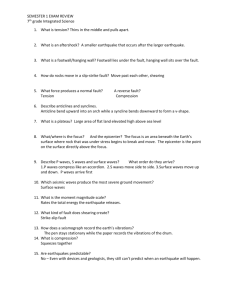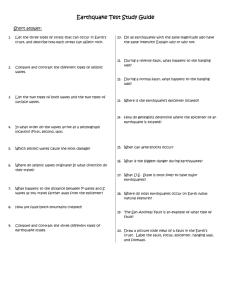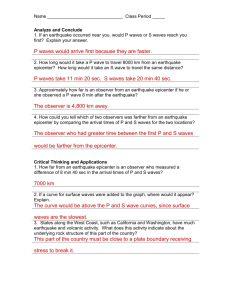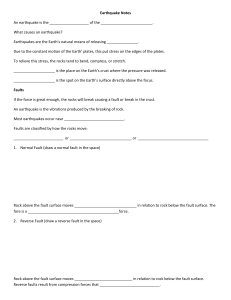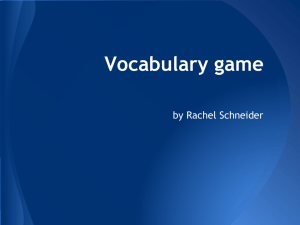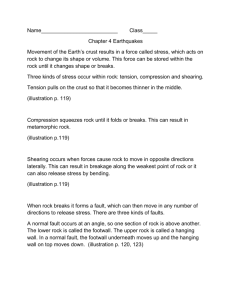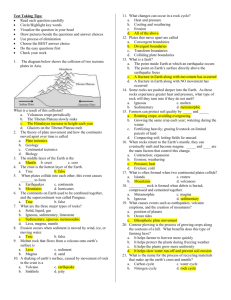Leticia Marques - Yourclasspage.com
advertisement
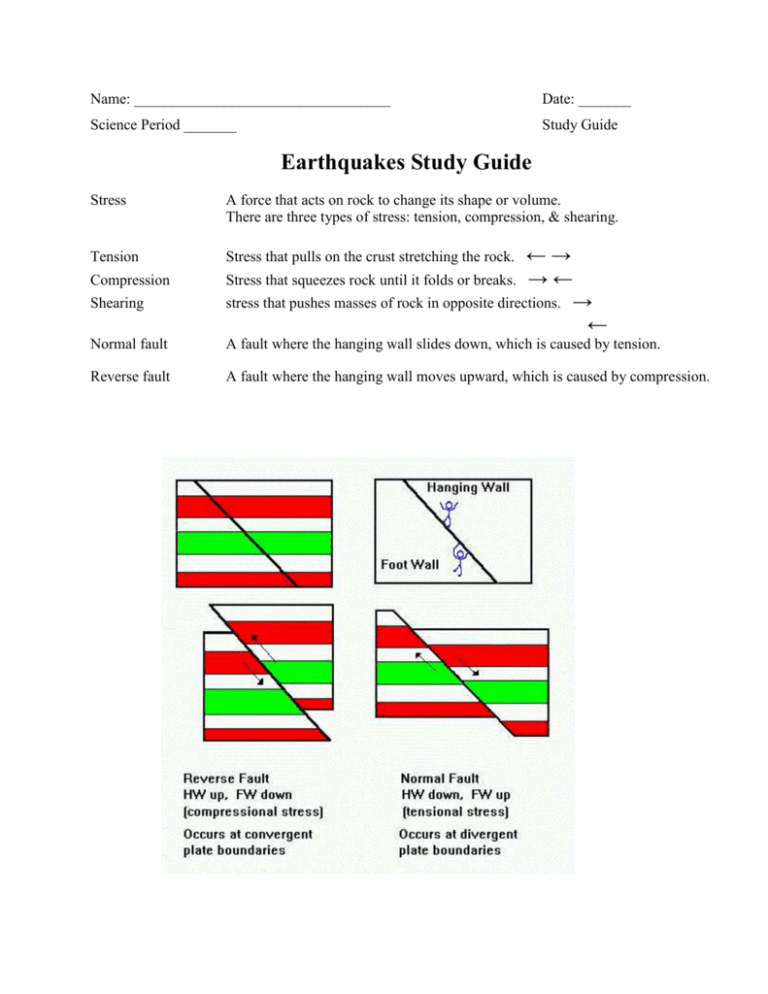
Name: __________________________________ Date: _______ Science Period _______ Study Guide Earthquakes Study Guide Stress A force that acts on rock to change its shape or volume. There are three types of stress: tension, compression, & shearing. Tension Stress that pulls on the crust stretching the rock. Compression Shearing ←→ Stress that squeezes rock until it folds or breaks. → ← stress that pushes masses of rock in opposite directions. → ← Normal fault A fault where the hanging wall slides down, which is caused by tension. Reverse fault A fault where the hanging wall moves upward, which is caused by compression. Thrust Fault Stress that squeezes the rock and trusts the hanging wall up and over the footwall. Strike-slip Fault fault where rocks slide past each other sideways with little up down motion. Fault-Block Mountain Two parallel normal faults form a mountain. Plateau Large area of flat land elevated high above sea level. 1. What is the difference between the Focus and the Epicenter of an Earthquake? The Focus is the point below the ground where the rock breaks triggering the earthquake, while the Epicenter is the point on the surface directly above the Focus. 2. What is the difference between P Waves, S Waves, and Surface Waves? P Waves, Preliminary Waves, are seismic waves that arrive first (they are faster) and make the Earth’s crust vibrate in a forward and back motion, while S Waves, Secondary Waves, arrive later (are slower than P Waves) and make the Earth’s crust vibrate from side to side and up and down and do not travel through liquids at all. When P Waves and S Waves reach the surface, they become Surface Waves, which make the ground surface roll with a wavelike motion. Surface Waves or L Waves (or Love Waves named after the British mathematician AEH Love) create the most ground damage. 3. What is the difference between the three different types of methods used to measure earthquakes? The Mercalli Scale measures the amount of damage an earthquake makes, while the Richter Scale measures the magnitude of the earthquake, and the Moment Magnitude Scale estimates the total energy released by an earthquake and can be used to rate all earthquakes, not just the ones that are nearby. The Richter Scale rates an earthquake based on the size of its seismic waves as measured by a seismograph, while the Moment Magnitude Scale uses additional data such as fault movement to determine the total energy released by an earthquake.
